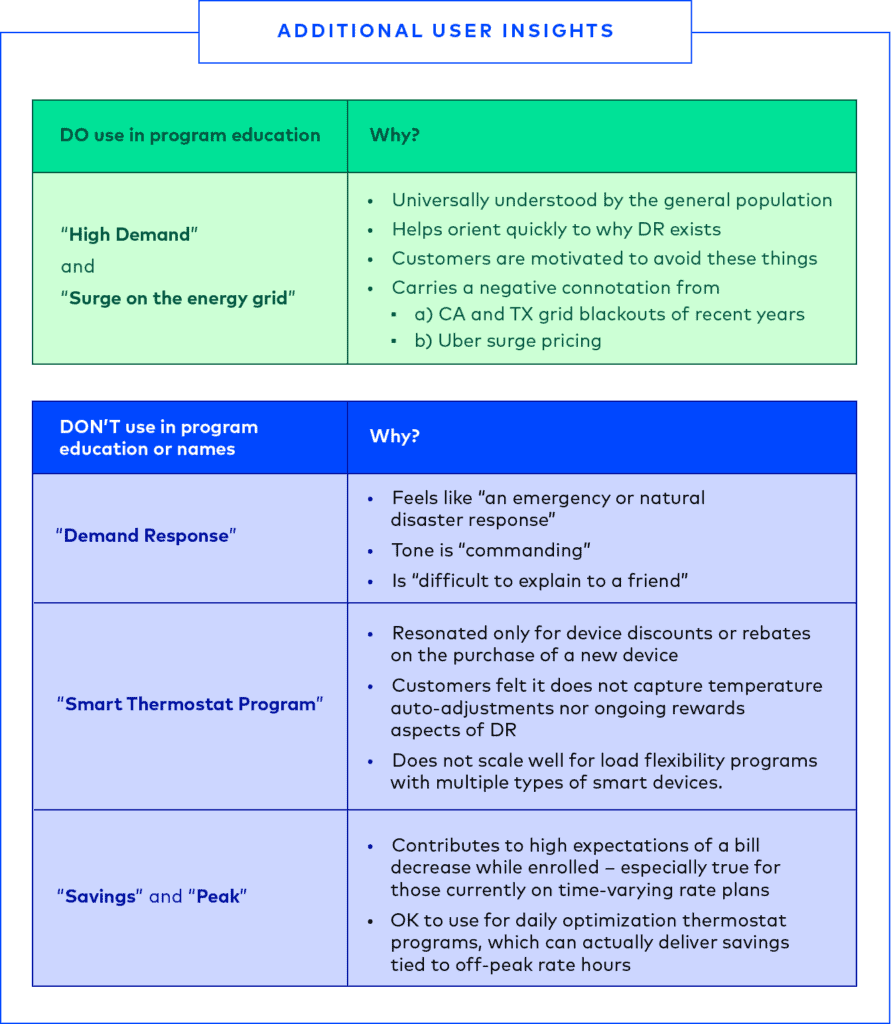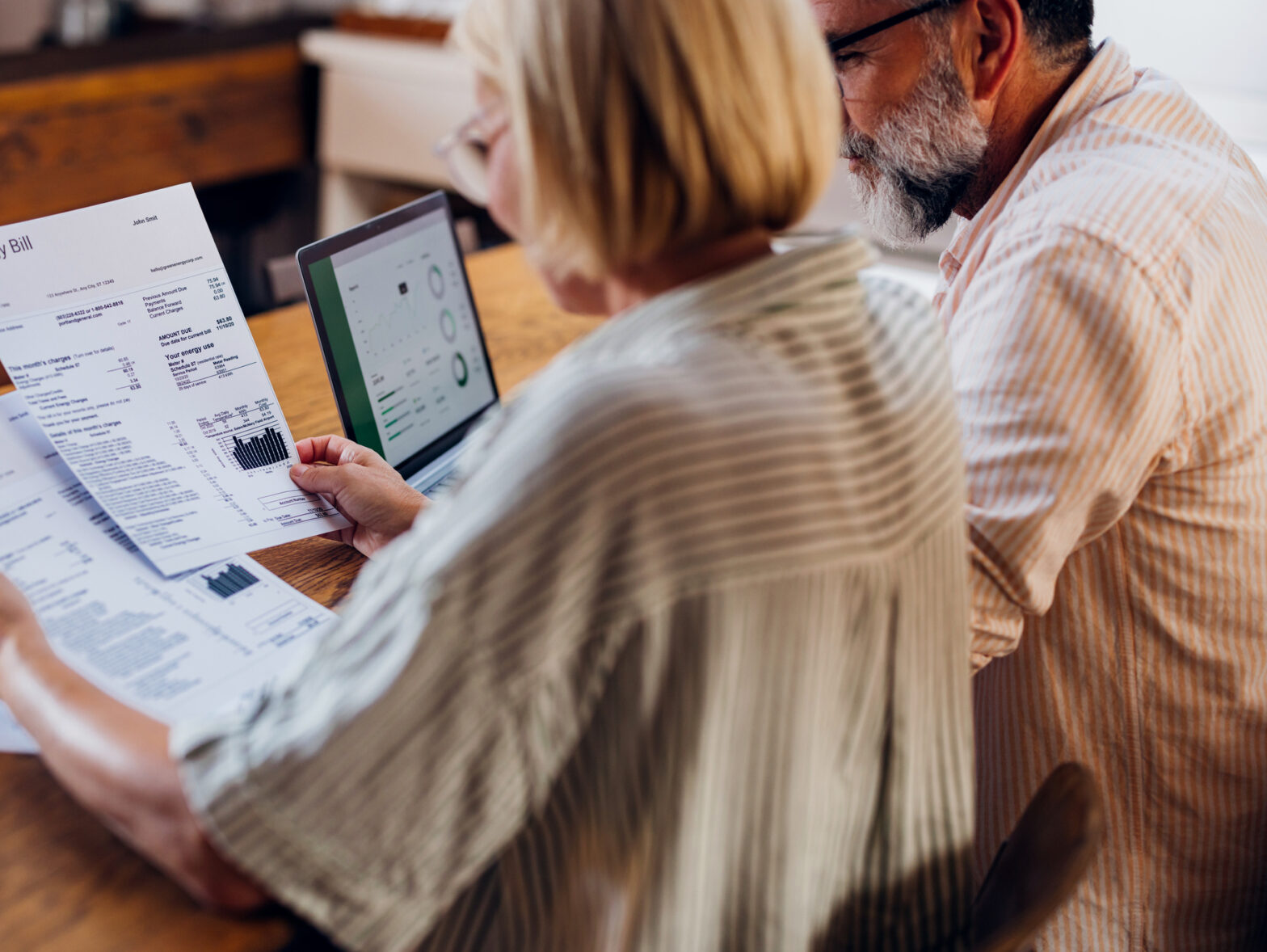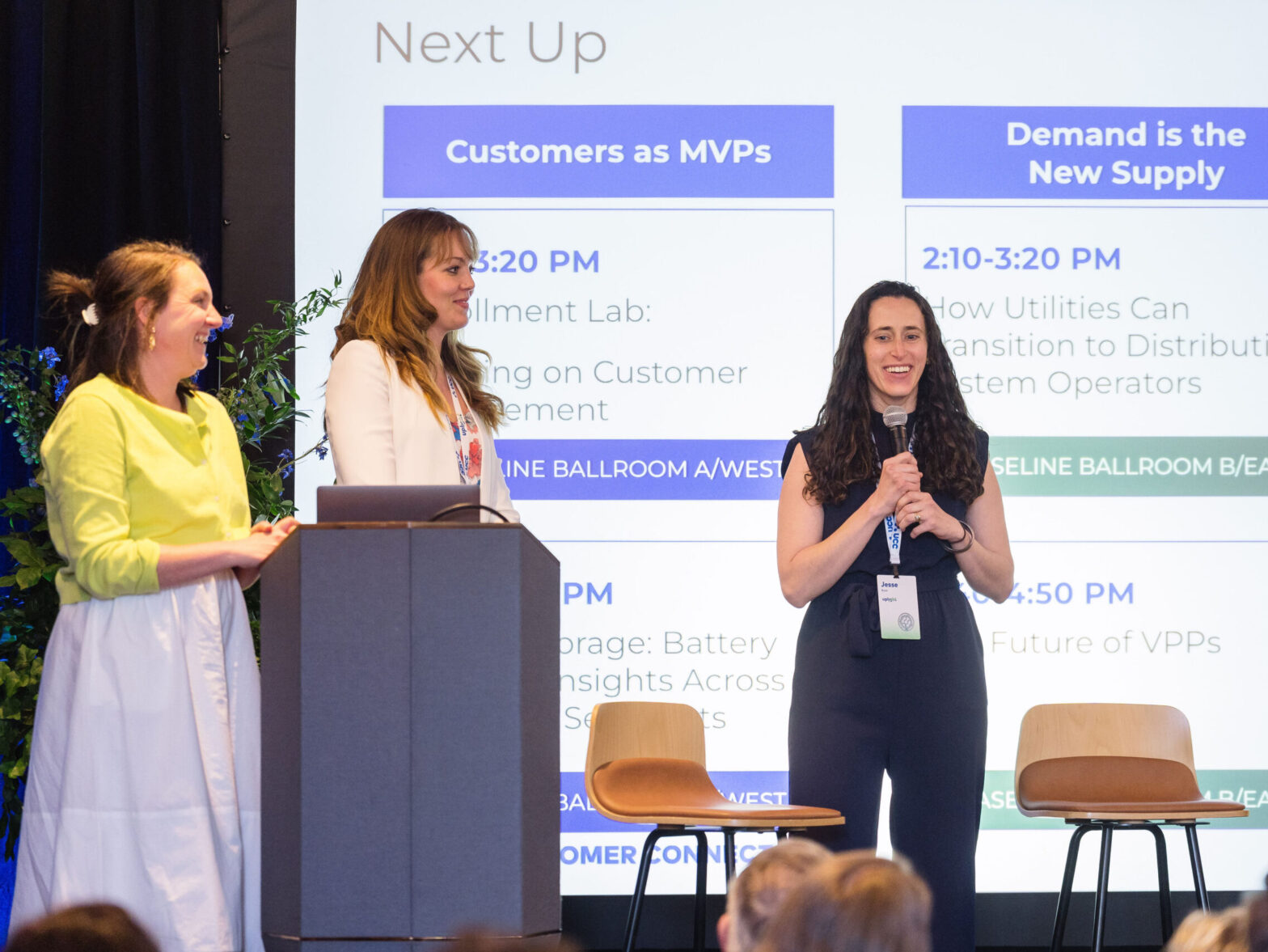How do we introduce energy load flexibility programs to customers in a clear, concise way?
50% of people have not heard of automatic or manual/behavioral demand response programs before, according to Uplight’s Voice of the Customer Survey 2023 and Uplight user research.
So when a customer encounters information about thermostat demand response (DR) programs, it’s a coin toss whether it will be the first time they’re being exposed to the concept of auto-adjustments.
This places more weight on how we communicate with customers. It’s critical that energy providers use clear, resonant language to describe load flexibility programs and reduce customer confusion. This is especially important as these programs scale to include multiple types of smart devices – and are bundled with time-varying rate plans.
To help get ahead of this transition, Uplight recently ran an end-user preference test to determine what language resonates the most with residential homeowners not currently enrolled in heating/cooling load flexibility programs.
Spoiler Alert: What We Learned
- Customers think of event-based thermostat DR as an “Energy Rewards Program” that has “smart shift events.”
- 75% of people expect their energy bill to decrease while enrolled in this type of program. (This is not the case)
- All three of these user test results are statistically significant.
Why do customers prefer to call DR an “Energy Rewards Program”?
DR incentives are salient; the rewards are apparent. All 80 participants noticed the DR enrollment sign-up bonus on the Uplight Intelligent Orchestration landing page right away.
Many voiced that the framing of “rewards” is “enticing.” This makes sense, as Americans average being enrolled in 16 rewards programs across industries, and regularly use 7/16 of them. (Source: Statistia)
The “rewards” program framing is also more accurate than calling DR an energy “savings” program. People in event-based DR programs receive incentives over time, most commonly in the form of prepaid cards or gift cards. Receiving payouts over time matches how a rewards program works.
Referring to DR as a “savings” program contributes to customers assuming their energy bill will decrease while enrolled. This could create customer satisfaction issues.
When DR program names were tested separately with a smaller cohort of 20 customers currently enrolled in load flexibility programs – that segment also preferred “Energy Rewards Program.” As one person put it, “You’re earning rewards, not saving money.”
Utility Recommendations
- Consider creating an “umbrella” program brand around “Energy Rewards Program.”
- This umbrella program can contain multiple smart device programs and time varying rate plan load flexibility options.
- Consider running a pilot or A/B experiment around DR program name changes from the current state. Measure enrollments before and after any program name changes.
- Replace mentions of customer “savings” with “rewards” in messaging.
Why do customers prefer to call DR auto-adjustments “smart shift events”?
Customers are looking for event names to describe what’s going to happen in their homes while they are enrolled (auto-adjustments).
Both the home’s temperature – and the home’s heating/cooling usage – are shifting during the day. The customer isn’t necessarily saving overall energy for their home so much as offsetting it.
The word “smart” here does double duty: it refers to the device and the hands-free nature of the adjustments.
This preference was especially pronounced with income-qualified customers and those currently on Time of Use Rates. And this makes complete sense, as these two groups are usually very aware of how shifting their usage behavior affects their energy bills.
Utility Recommendation
- Use ”smart shifting” in program event messaging.
- This could scale especially well to programs with bundled time varying rate plans.
Why do 75% of customers expect a bill decrease while enrolled in event-based thermostat DR programs?
A big part of this is wishful thinking during a time of inflation. Nowhere in the program education customers viewed was there a mention of energy bill savings.
A surprising assumption also emerged:
When a handful of customers missed how they would be getting their DR incentives (Ex: issued as a pre-paid card), they assumed incentives would be applied as energy bill credits. This was also not mentioned in program education.
* Note that this is not preference data for what customers want – nor what necessarily drives customers to enroll in DR.
Why did customers assume incentives would be applied as bill credits in this case?
- It’s very clear the utility is involved in the DR program through logo and language.
- People made a logical leap that program incentives would be applied by the utility on their recurring financial transaction: their energy bill.
* Note: This is “coherence” – people expecting domain-specific rewards. It’s a cognitive shortcut related to mental models and how people view utility programs.
3. Bill credits are hands-free, just like DR auto-adjustments are hands-free.
Utility Recommendation
- Make it very clear and visible early on how customers will receive DR incentives. Don’t bury this information at the bottom of a page, in FAQs, or info tooltips.
- We hypothesize that using both “Energy Rewards Program” and “smart shift events” framing will lessen expectations of a bill decrease.
Why these results matter
The user research data and recommendations discussed will help us optimize existing event-based thermostat DR program education, marketing, and enrollments.
It can also inform how we handle scaling load flexibility programs to include multiple device types and bundles with time varying rate plans.
Why you should trust this data and Uplight
- The three preference results highlighted are statistically significant.
- “Energy Rewards Program” (p=0.001) | n=21/80 customers
- “Smart Shift Events” also (p=0.001) | n=21/80 customers
-
- 75% of customers expect a bill decrease while enrolled (p<0.001) | n=60/80 customers
- The user research is mixed methods, bringing together quantitative and qualitative insights.
- Homeowner end users who opted in to research were independently recruited to provide representative perspectives across income levels, current rate plans, and geography. No one segment was favored and findings were true across segments.





